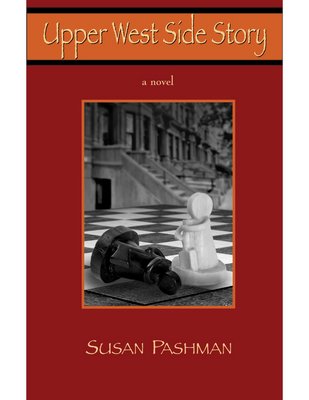
Out of a ragout of race, political shenanigans, motherly love, cross-racial friendship and social envy, Susan Pashman has produced an engrossing, highly readable, and disturbing novel, “Upper West Side Story” (Harvard Square Editions, $22.95, 270 pp., paper).
Bettina Grosjean, through whose eyes we view most of the story, is a professor of women’s history. Her husband, Stephen, is an environmental policymaker in the New York City mayor’s office. They have two very precocious children, Zack and Hallie.
Bettina and her best friend, Viola Nightingale, who is African-American, are responsible for creating an advanced studies program for the gifted and talented in their Upper West Side school. Viola’s son, Cyrus, and Zack are also best friends, outstanding students and gifted chess players.
Then the unthinkable happens. Coming home from a school trip, Cyrus and Zack are horsing around on the stairs in the Port Authority Bus Terminal, and Zack gives his friend a little bump. Cyrus falls down the stairs and suffers traumatic head injuries. He ultimately dies.
Three of their fellow students are persuaded by an unscrupulous black politician, Marcus Hake, to testify that they saw Zack push Cyrus down the stairs, and the boy is remanded to the juvenile detention center, without bail. Zack becomes a pawn in Hake’s larger scheme to prevent three murderous teenagers from being charged as adults.
What ensues is a nightmare of racial bitterness, corruption, the horrors of imprisonment and the severe testing of the bonds of friendship. The passionate Bettina attempts to move heaven and earth to get her son released, and to save a friendship that has meant so much to her. But her marriage is also tested. Stephen is a minor player in city politics, an opponent of Marcus Hake, and one who wants to use the system to help his son. Bettina only sees her son’s incarceration and the accusations that caused it are wrong, and Stephen’s game of inches is part of the problem that infects the system.
The story is also told from Zack’s point of view. He has always kept a journal and continues to do so during his imprisonment. It is a harrowing tale and culminates in his stabbing with a rusty corkscrew. He tries to keep this, and the resulting infection, from the authorities and his parents, realizing he might be killed if he reveals it.
While his parents are unsuspecting, his sister, who hasn’t seen him, senses he has been hurt: “He’s small, he’s smart, and he’s white. How could he not be hurt?”
Ms. Pashman, a former attorney and philosophy professor who lives in Sag Harbor, has a very good ear for dialogue and jargon. For example, Zack describes, in his journal, the events the led to the accident and the goading that Cyrus received before it: “Then Louis said, ‘Cyrus not gonna let no snowflake beat him, no way. He not no friend with no wimpy-ass neither. No way!’ Louis and those other guys speak perfectly good English but when they hang out in the schoolyard, they start talking black. Black kids in the Special Enrichment Program are always checking themselves out to make sure other black kids don’t think they’re turning white just from being in our class. And that’s pretty bizarro because only four kids in our class actually are white.”
“Upper West Side Story” is a well-constructed novel. The plot unfolds with a horrifying inevitability. It is suspenseful as a thriller. The characters seem very real, though perhaps Zack and Hallie are just a little more sophisticated for their ages than might seem possible, even given their high intelligence. Hake is clearly someone who began as an idealist and turned into someone for whom the end justifies the means, even if the means include the exploitation of a grieving mother and the destruction of a 13-year-old boy, who just happens to be white. Bettina is a mother who acts with the tenacity of a lioness protecting her lion cub. Viola is sensitively drawn, paralyzed by her grief, but ultimately she becomes the heroine of the story.
Ms. Pashman has no ax to grind, beyond the dream of Martin Luther King Jr., whose hope it was that we would be judged not by the color of our skin, but by the content of our character.